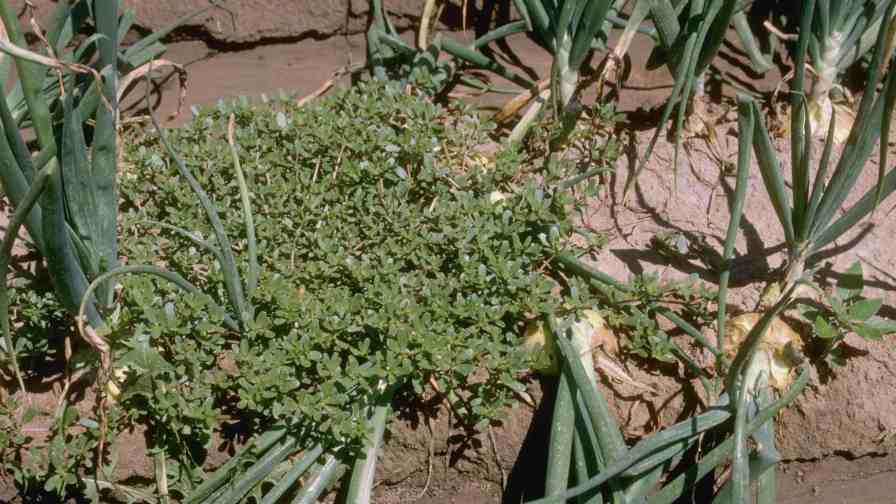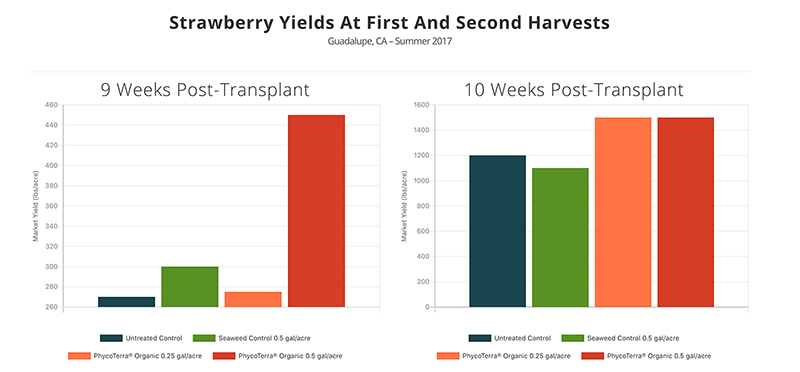Common Purslane Needs Diligence to Conquer in Vegetable Crops
Purslane, Portulaca oleracea, is good at surviving and has several modes of reproduction — aggressive seed spreading, ability to root almost any of its parts, and long-lived seeds than can lay dormant until exposed to sunlight.

Richard Smith
American Vegetable Grower® (AVG) magazine turned to Richard Smith, a farm advisor, Vegetable Crop Production and Weed Science, at the Cooperative Extension in Monterey County, University of California, and AVG columnist, to give us need-to-know tips on this common and persistent weed.
AVG: Has purslane’s impact shifted in past years? How?
Smith: Populations of purslane are problematic in the summer months in California (May to September). Pronamide was removed from the market for leaf lettuce from 2009 to 2015. Leaf lettuce is the No. 1 lettuce in the Salinas Valley (64,800 acres in 2015). During the time that pronamide was off the market, purslane populations increased, in spite of the availability of bensulide, which also is effective. In other rotations, purslane is under moderate to good control, but it is still a very persistent and aggressive weed issue in cool season vegetable production.
AVG: How widespread, geographically, is the increase or decrease? And where in your area are you seeing the changes?
Smith: It is persistent throughout the cool and warm season vegetable production areas in California.

Common Purslane has several modes of reproduction, including aggressive seed spreading, ability to root almost any of its parts, and long-lived seeds than can lay dormant until exposed to sunlight. Photo credit: Howard Schwartz
AVG: What chemical controls are available? What about biocontrols or organics?
Smith: In lettuce, pronamide and bensulide offer good control. In cole crops, DCPA (Dimethyl tetrachloroterephthalate) provides good control. Most of these herbicides are applied as a band over the seedline, and purslane takes advantage of the untreated areas on the bed or shoulder of the bed to grow and set seed. As a result, even in fields treated with herbicides, it can still establish a foothold and survive and set seed.
Mechanical cultivation is excellent for controlling this weed, but cultivation leaves an uncultivated band over the seedline. Automated weeders (Steketee and Robovator) remove about 50% of the weeds in the seedline, and this is a new development that is very helpful.
Hand weeding is the last resort for controlling this and other weeds. The cost of weeding is increasing in California due to recent laws regarding the minimum wage and overtime.
[Editor’s note: Smith discusses this more in depth in the article “New Weeding Technology Available For Vegetable Growers,” which can be viewed on GrowingProduce.com.]
AVG: Is purslane showing resistance to any of the treatments?
Smith: No resistance to the above-mentioned herbicides detected thus far.
AVG: What cultural practices will help contain these weeds?
Smith: Good sanitation and a zero weed-seed philosophy — removing weeds from the field, not letting any weeds go to seed, etc.
Also, certain rotations really reduce this weed. Growers that have dedicated certain ranches to fast-maturing baby vegetables (such as baby lettuce, spring mixes, or spinach) can reduce this weed because these crops mature before the weed can set seed. So after a period of time, the weed-seed populations decline.
AVG: Which vegetable crops are most affected?
Smith: All vegetables grown during the summer months.
Purslane At A Glance
Crops affected: Purslane is a generalized weed — it affects most vegetable crops. It’s a cool season crop weed in California, and a summer crop weed in much of the rest of the U.S.
Where is it? Although this report is from California, purslane is a nuisance throughout North America.
What You Should Know About Herbicides for Purslane
The herbicide products Richard Smith of the University of California recommends for control of purslane are primarily preemergent.
Kerb, active ingredient: proanamide
Manufacturer: Dow AgroSciences
Weed Science Society of America (WSSA) Group: 3
Mode of action: Seedling growth inhibitors (root and shoot)
Dacthal, active ingredient:
Dimethyl tetrachloroterephthalate
Manufacturer: Amvac Chemical Corp.
WSSA Group: 3
Mode of action: Seedling growth inhibitors (root and shoot)
Prefar, active ingredient: bensulide
Manufacturer: Gowan Co.
WSSA Group: 8
Mode of action: Seedling growth inhibitors (shoot)
Balan, active ingredient: benefin
Manufacturer: Loveland
WSSA Group: 3
Mode of action: Inhibitor of synthesis of very long-chain fatty acids










